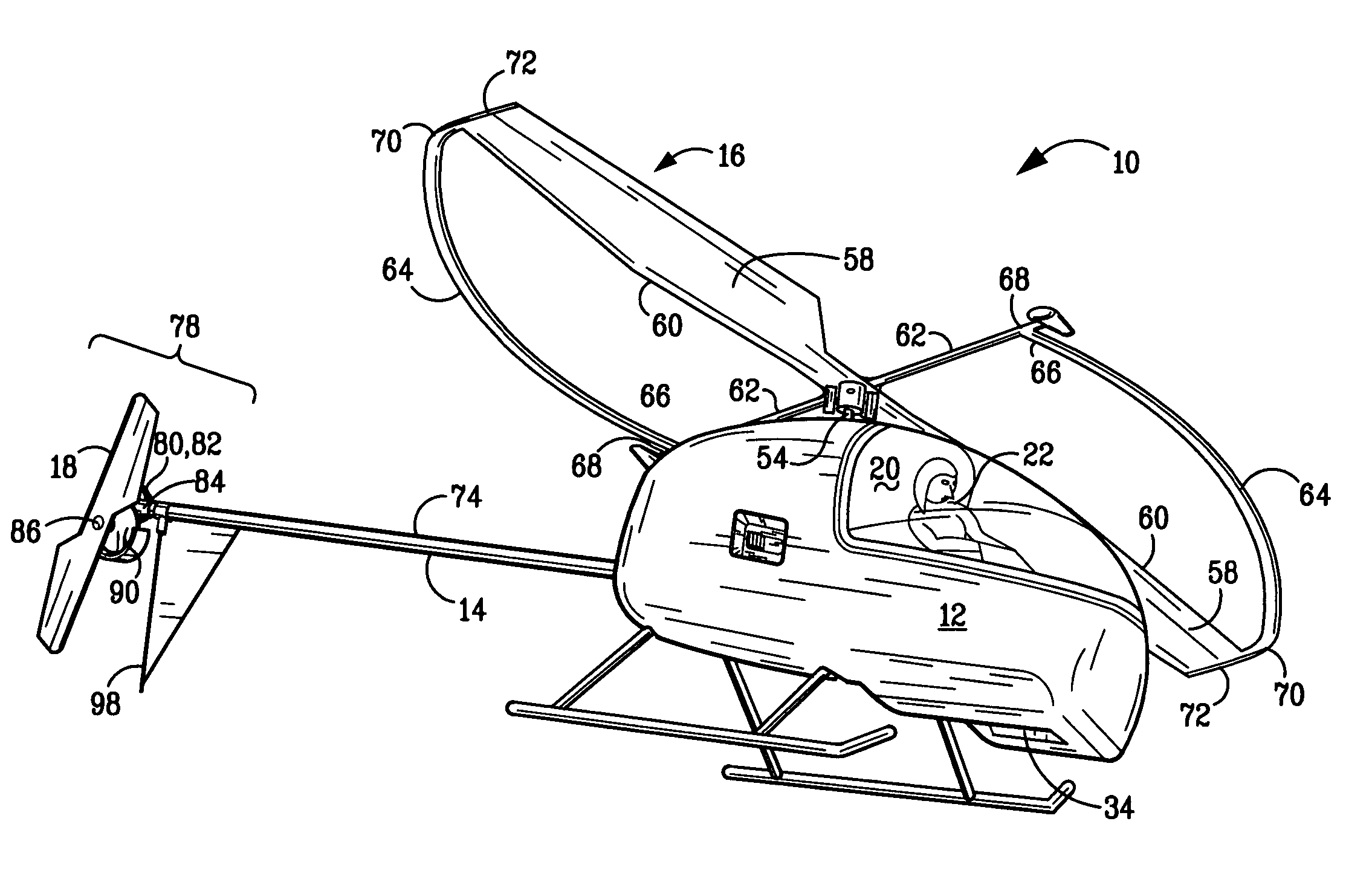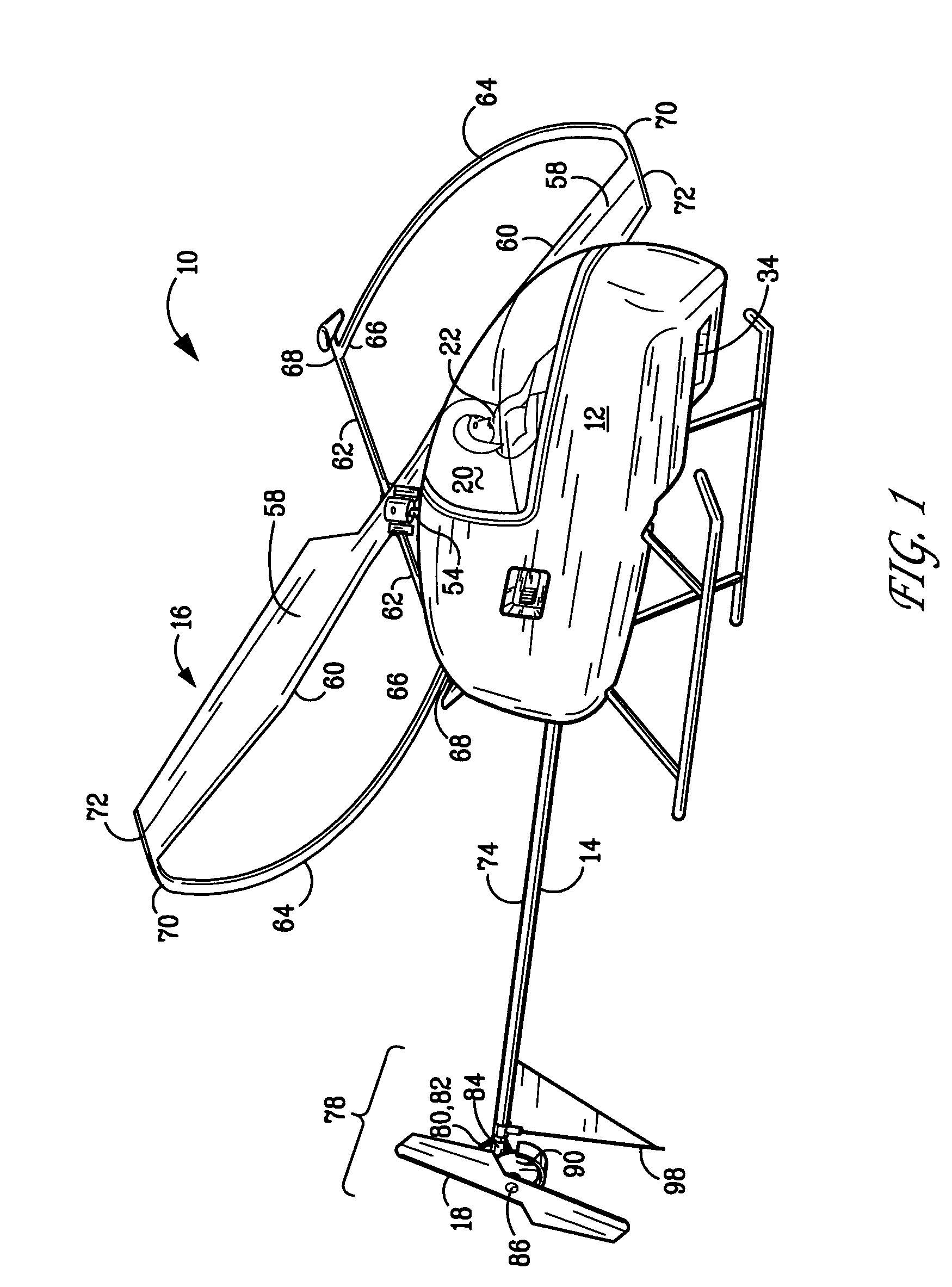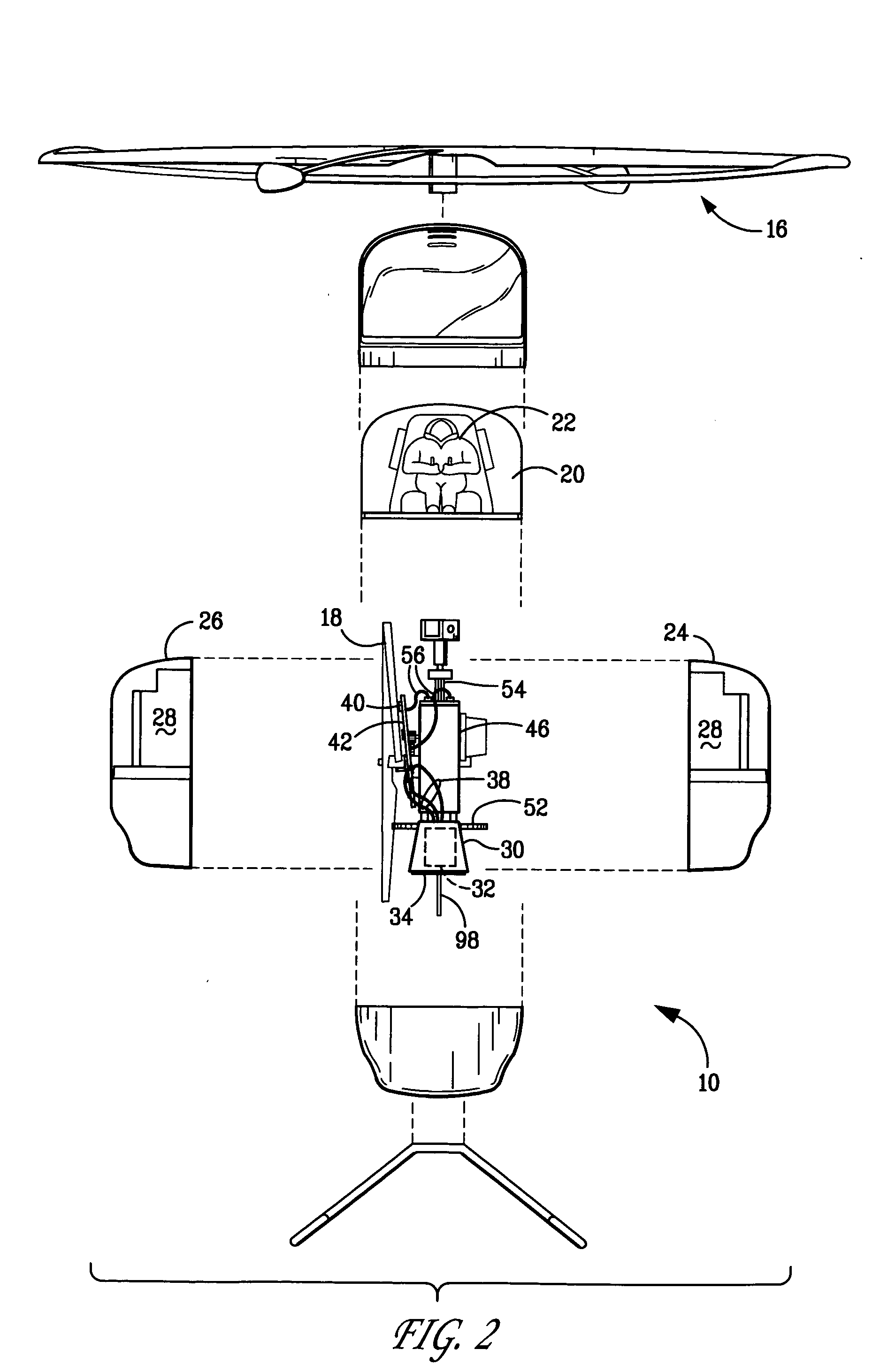Radio controlled helicopter
a radio controlled and helicopter technology, applied in the field of entertainment or hobby industry, can solve the problems of unstable boom, difficult turning, and inability to precisely control, and one motor controls both the main propeller and the rear rotor
- Summary
- Abstract
- Description
- Claims
- Application Information
AI Technical Summary
Benefits of technology
Problems solved by technology
Method used
Image
Examples
Embodiment Construction
[0028] The basic radio controlled helicopter 10 of this invention has the standard helicopter features, i.e. a main body 12, a boom 14, a main propeller 16 and a rear rotor 18. Within the main body, there necessarily is a device to receive the control signals from a ground station, power means and circuitry to activate and control the main propeller and the rear rotor. Instead of having one motor to power both the main propeller and the rear rotor, there is a separate motor for each.
[0029] Based on aesthetics, the particular shape and configuration of the main body is determined. Typically, it is made to look sleek, but the invention is independent of the look, appearance and configuration. For realism, inside the cockpit 20 of the main body a model pilot 22 may be positioned.
[0030] The main body may be made of any desired material. In the preferred embodiment, a light weight material, such as styrene, is used. Such a material has sufficient sturdiness that it stays together to ma...
PUM
 Login to View More
Login to View More Abstract
Description
Claims
Application Information
 Login to View More
Login to View More - R&D
- Intellectual Property
- Life Sciences
- Materials
- Tech Scout
- Unparalleled Data Quality
- Higher Quality Content
- 60% Fewer Hallucinations
Browse by: Latest US Patents, China's latest patents, Technical Efficacy Thesaurus, Application Domain, Technology Topic, Popular Technical Reports.
© 2025 PatSnap. All rights reserved.Legal|Privacy policy|Modern Slavery Act Transparency Statement|Sitemap|About US| Contact US: help@patsnap.com



